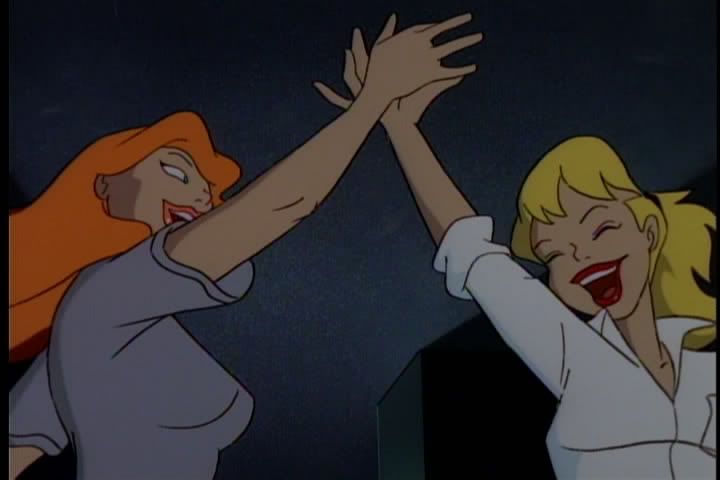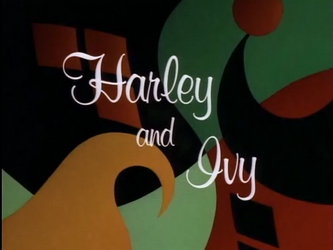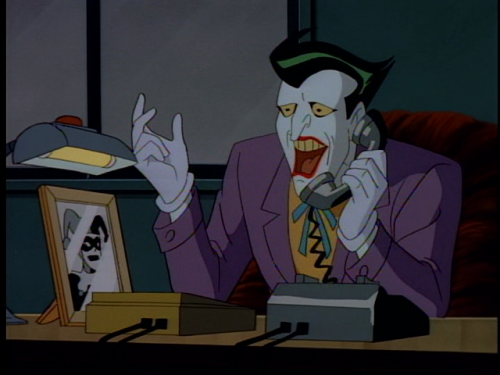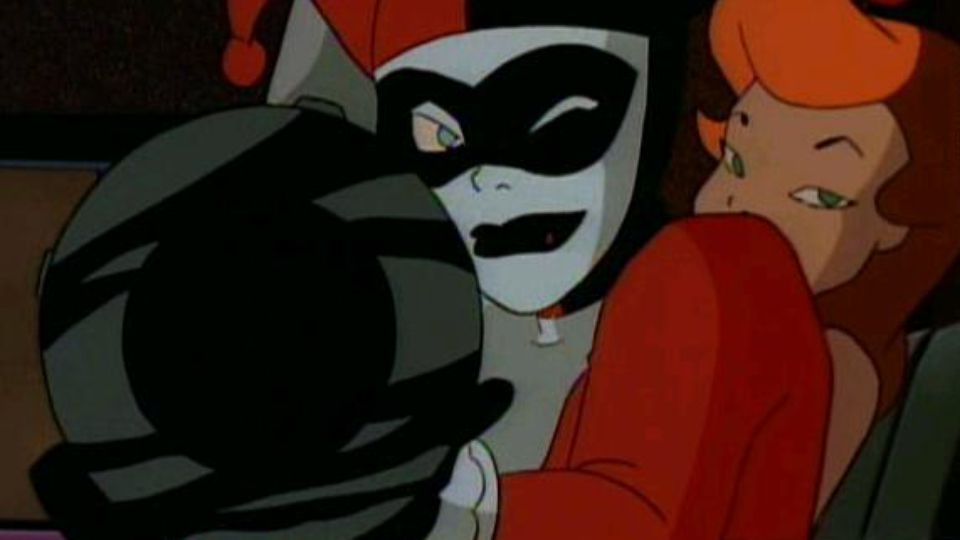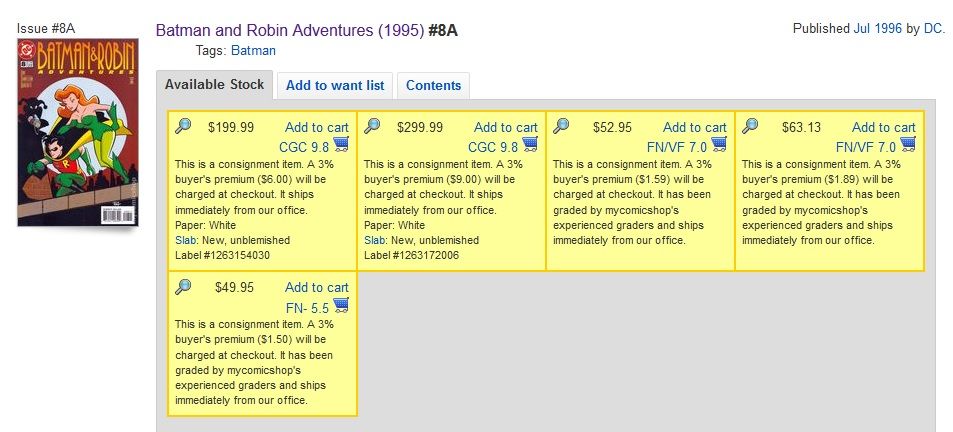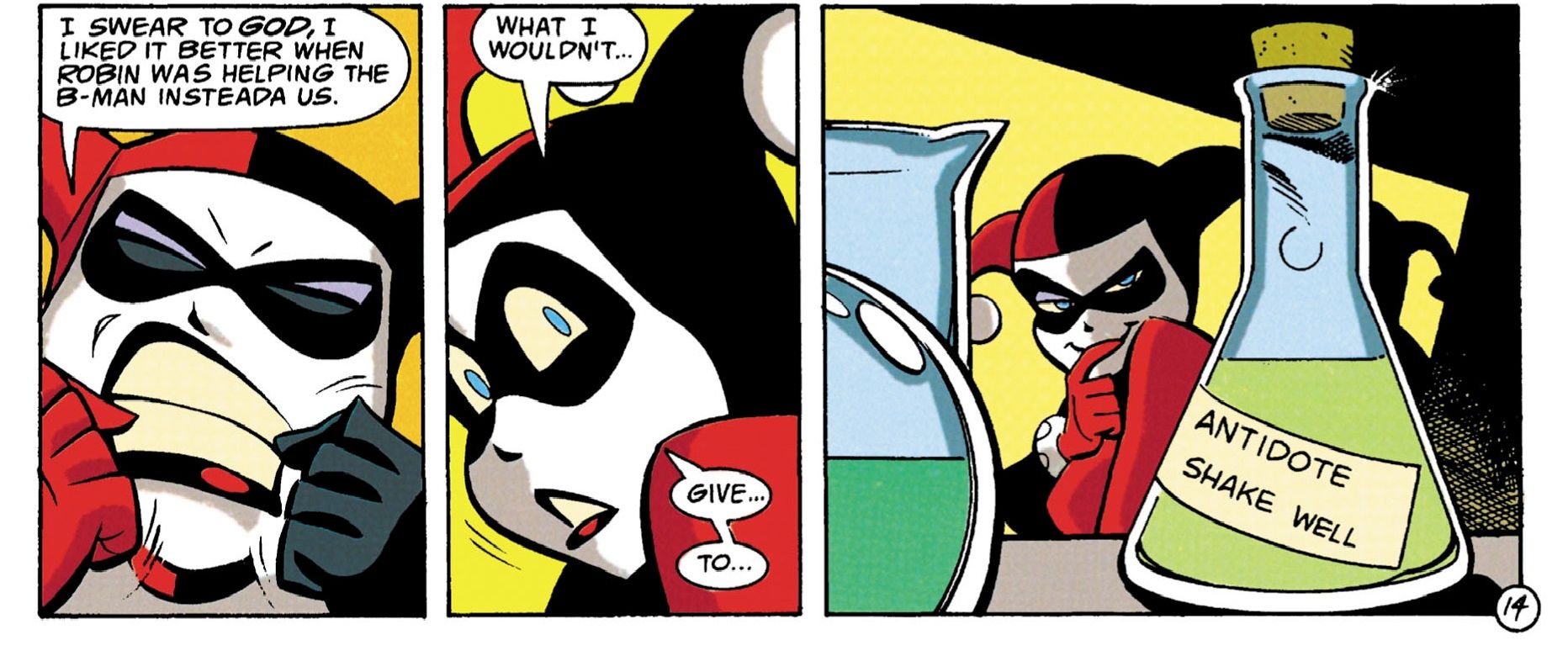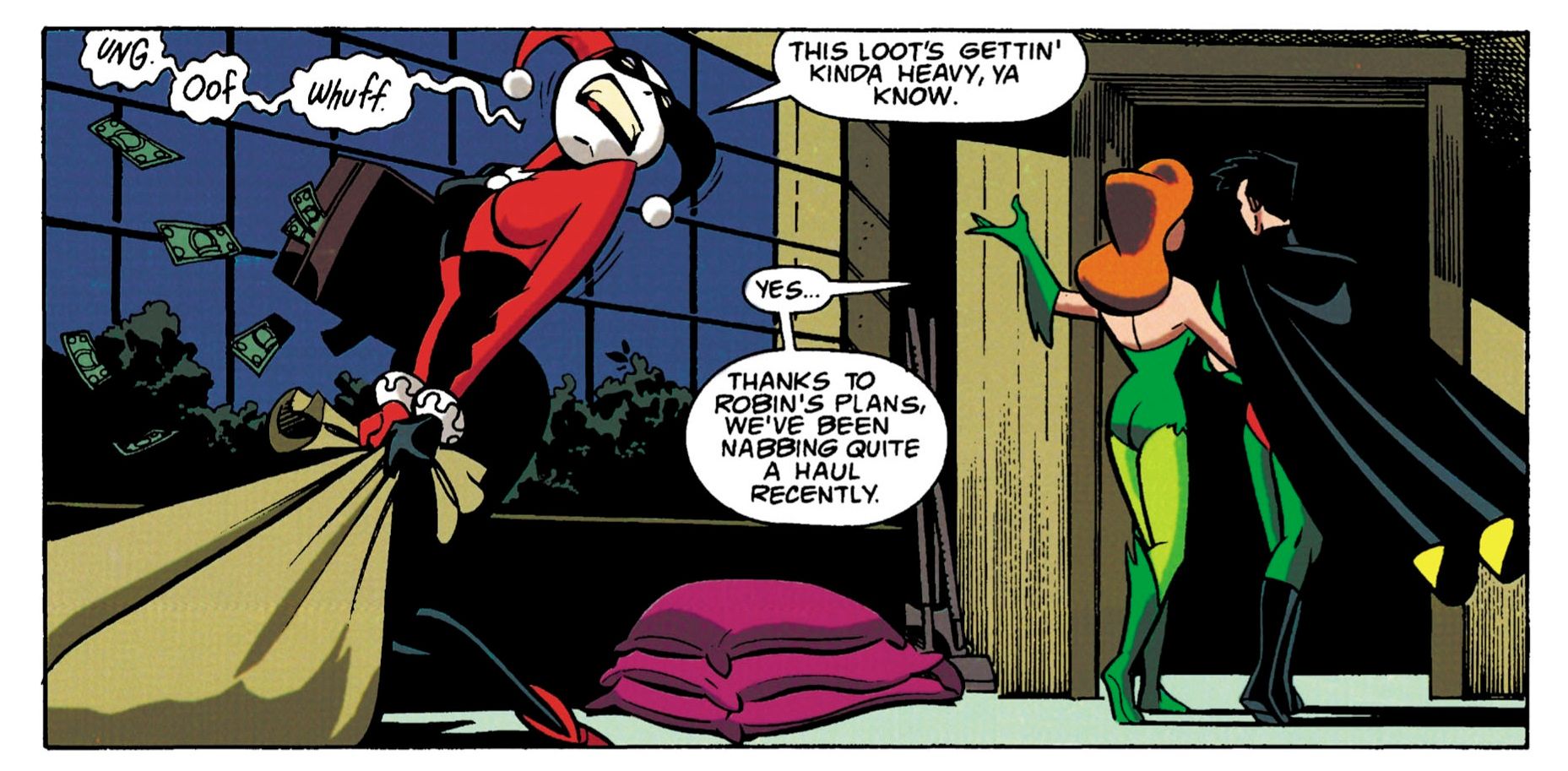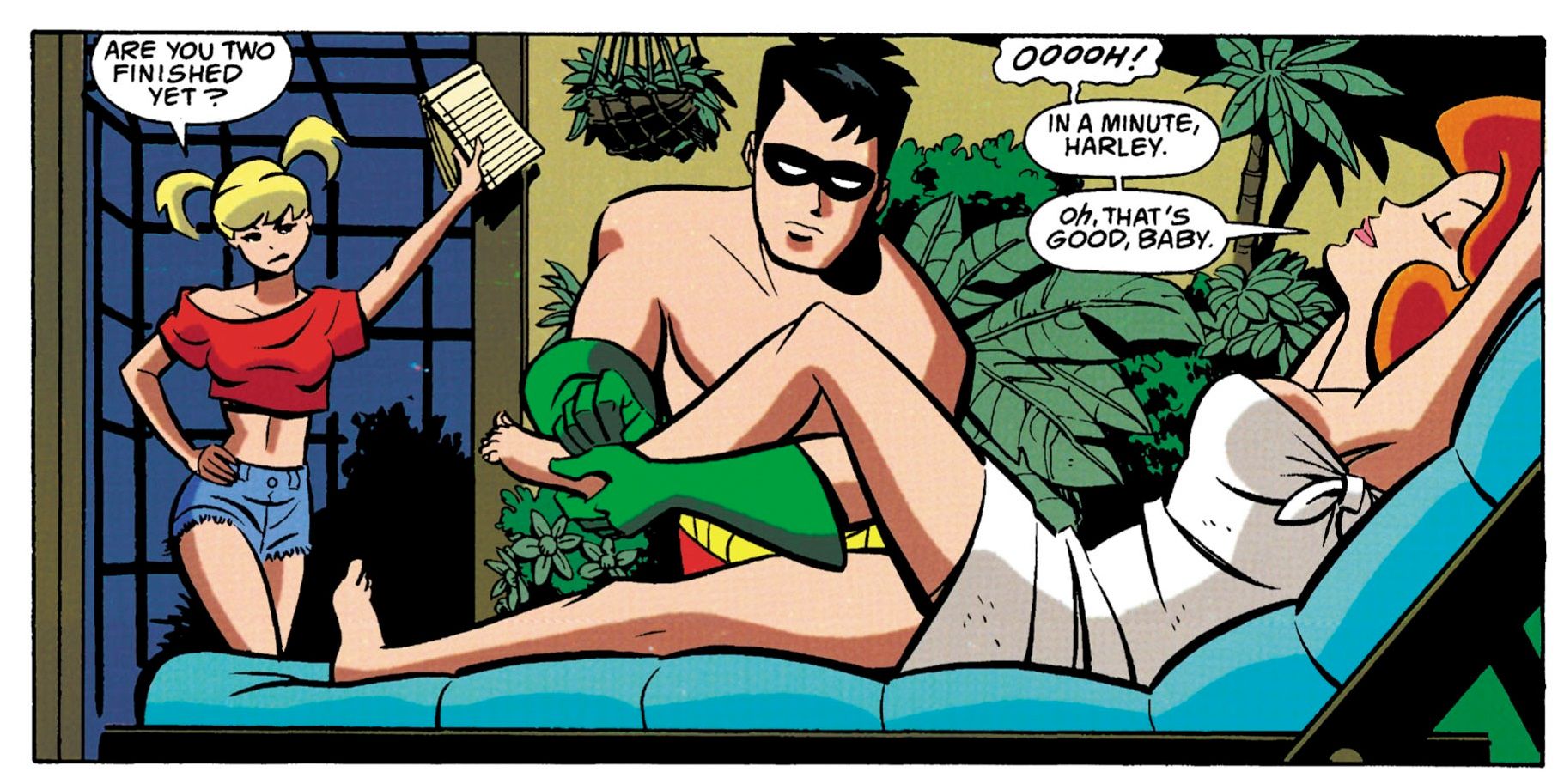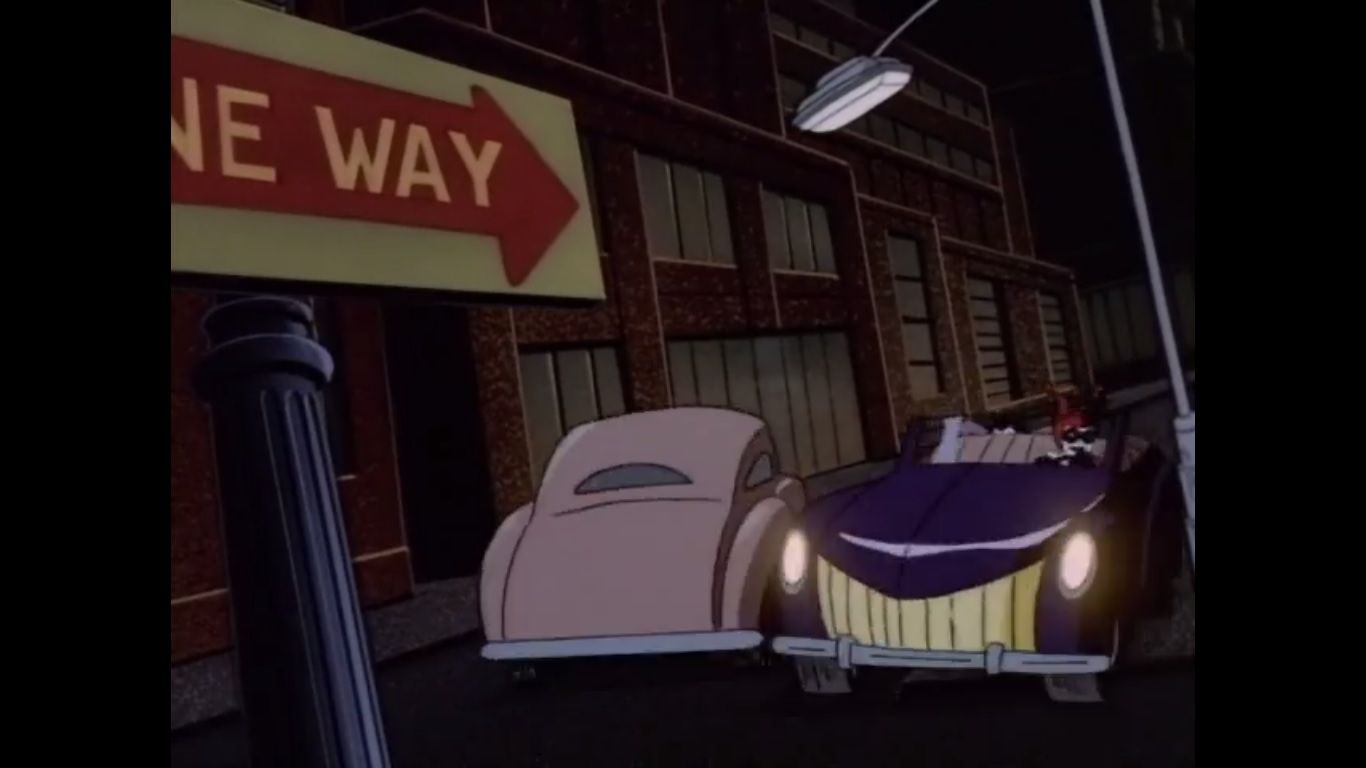“Harley and Ivy” is undeniably a pivotal episode of Batman: The Animated Series. “Pivotal” possibly doesn’t even do the episode justice; it’s one of the most influential episodes of the series’ entire run. But how many people know about its sequel in the pages of Batman & Robin Adventures?
As you’ve likely guessed, this entry will delve into the subject of Harley Quinn, her relationship with Poison Ivy, and how exactly the Adventures series handled the issue. (I’m not going to call it “the thorny issue.” Give me some credit.) Is this selection a flagrant attempt to play off the publicity surrounding the impending release of the Suicide Squad film? Probably. But if you have your own suggestions for Adventures issues you’d like to see paired with animated episodes, just let me know in the comments.
Any fan of Batman: The Animated Series is certainly aware of this episode. It’s such an established part of the canon, I feel odd even writing a recap of its premise. But, just to be thorough, let’s establish that “Harley and Ivy” is the January 18, 1993 episode of the series, written by Paul Dini and directed by Boyd Kirkland. The plot has the Joker kicking Harley Quinn out of their hideout after blaming her for a screw-up during one of their escapades with Batman. Well, actually, the final straw was Harley’s sheepish response of “maybe” when the Joker sarcastically asked her if she thinks she’s a better criminal than he is.
In order to prove her worth, Harley attempts to steal the Harlequin Diamond (or, “Harleouin Diamond,” according to the sign) from a museum, one that also happens to be hosting experimental plant specimen in its lab. She runs into Poison Ivy during Ivy’s bungled attempt to steal the plants and they quickly team up in order to escape the police. From there, Ivy takes Harley to her hideout, an abandoned housing development built over a toxic waste dump. It’s an utterly unremarkable suburban home that’s surrounded by a toxic swamp of death. This introduces the episode’s theme of women fighting against the roles men (or more broadly, a male-dominated society) have imposed upon them. It’s no coincidence that the first job the two crooks pull is a robbery of the men’s-only Peregrinators Club, and that when Batman is eventually captured by the women, they restrain him on a kitchen table with vacuum cleaners and other tools that allegedly symbolize men’s oppression of women.
That’s the point of view of the characters, but is the episode itself attempting to make such a statement? It seems unlikely -- I think Dini is trying to have Ivy stay true to the man-hating persona she’s already exhibited on the series, and Harley is mainly participating because she happens to be angry with the Joker at this time. There’s really no argument during this episode that society is grinding women down into subservience, unless you believe the Joker is supposed to represent mainstream male values, which would be a stretch. What Dini was likely doing was a riff on Thelma & Louise, which was still receiving pop culture tributes during the time he wrote the episode. (There’s even a Simpsons episode from this year that plays off Thelma & Louise in a similar manner.)
The female empowerment theme of the episode was a rare thing in the land of “Kids TV.” FOX famously hated “Harley and Ivy” and initially refused to air it. There’s also some talk about FOX objecting to the lesbian subtext of the episode, which has been reported as the true reason for its delay. I’ll be honest -- I’ve never gotten any hint from this specific episode that Harley and Ivy are a romantic couple. (And, yes, I noticed that they don’t wear pants at home.) Of course, as anyone knows, subsequent creators have certainly gone in that direction, to the point that it isn’t “subtext” anymore. But was this always Dini’s goal? Even when discussing the episode recently on Justin Michael’s Batman: The Animated Podcast, Dini seemed cagey when discussing the romantic angle. In fact, Dini seems to view Ivy as so distanced from humanity at this point, she’s not truly capable of romance. Honestly, do we have to assume that two females reacting against male attitudes towards women are automatically lovers?
The story reaches its (platonic) climax when both Batman and the Joker independently find Harley and Ivy’s location. During the ensuing melee, the toxic fumes explode and the hideout goes up in flames. Joker is captured by Batman, while Harley and Ivy escape, declaring that they’ll be caught by no man. They’re right -- they’re apprehended by GCPD officer Renee Montoya. Later, at Arkham Asylum, Ivy is irritated by Harley’s infatuation with the Joker, which remains unabated, even after the events of the previous days.
Harley and Ivy’s exchange at the end is played as a silly ending, but it’s never lessened the impact of the episode. “Harley and Ivy” is the first time the audience sees that Harley, as a character, can actually work outside of her relationship with the Joker. Harley’s chemistry with Poison Ivy foreshadows her pairings with other characters, usually ones with a more grim view of life, which paves the way for everything...there’s likely no Harley Quinn comics or Suicide Squad movie without this episode.
Arleen Sorkin’s Harley bounces off Diane Pershing’s Ivy in a cute way throughout the episode, and it certainly doesn’t hurt that “Harley and Ivy” features Boyd Kirkland direction and Dong Yang animation. Dong Yang doesn’t wow you with every frame like a TMS episode, but their record on this series is solid. And Kirkland was one of the finest animators to ever work in this style. Kirkland’s Sub-Zero movie is likely the best the original designs ever looked, and he always had a knack for animating the female characters. Notice that he was often the director assigned the episodes starring female villains.
No one could’ve predicted “Harley and Ivy”’s impact when it aired, but the episode is clearly a classic. The first sign of its influence has largely been forgotten, however. If you happen to own 1996’s Batman and Robin Adventures #8...well, congratulations on owning one of the few comics from 1996 that people are willing to spend more than a dollar on. Apparently, much more than a dollar!
“Harley and Ivy and…Robin?” is the eighth issue of Batman and Robin Adventures, featuring the standard creative team of this time: Paul Dini wrote the plot, Ty Templeton scripted it, and Rich Burchett provided the art. Burchett is a fantastic artist whose work in the Adventures realm hasn’t received as much attention as it deserves. His Batman can occasionally be a bit flat and boxy, but his interpretation of Robin is beautifully fluid (and appropriate for his age bracket -- this Robin does honestly resemble a teenager), and Burchett’s female renditions are incredible. The initial Poison Ivy design never looked as good as she does under Burchett’s pencil. He’s also adept at selling emotions with just a few lines, an aesthetic Bruce Timm always pushed when designing the characters for the show. Burchett was essentially the perfect artist for this book, and his leaner, more angular approach to the designs foreshadows Bruce Timm’s later revamp of the show.
The story opens with Robin outflanking Harley at the Gotham Zoo, where she’s attempting to reclaim her hyena “babies.” Unbeknownst to Robin, Harley’s brought a friend along for help, as he soon discovers when he’s kissed by Poison Ivy. The kiss brainwashes Robin, forcing him into her service. (A similar plot appears later in Batman & Robin, where it’s played even more broadly.) Robin is put to use plotting out Harley and Ivy’s newest crime spree, one that lacks the decidedly feminist bent of their initial team-up. In this story, they only want jewels, diamonds, and rubies.
While Batman attempts to locate his ward, Harley quickly grows tired of Ivy’s new boytoy. There’s a brief hint that maybe Harley resents the sexual attention Robin receives from Ivy, but for the most part, we’re given the sense that Harley’s chief annoyance is her status as a third wheel in this particular crime-bicycle.
I’m not sure if this was something Dini intended in his plot, or if it came from Templeton’s mind, but Ivy does seem to genuinely enjoy having Robin around as a young stud. Ivy as the sexual aggressor, and not a nihilist putting on a seductress act, is an unusual portrayal of the character in this continuity. Usually, we see men as only objects for Ivy to use, and while she’s certainly using Robin here, the script implies more than once that she’s genuinely attracted to Robin sexually.
Harley eventually decides that Robin’s receiving too much credit, and attention, in this gang, so she mixes up a batch of lemonade that’s laced with Ivy’s antidote. When a groggy Robin again forgets to acknowledge Harley’s presence, she snaps and attacks him with assorted gardening instruments. Batman, conveniently, has assembled the clues and arrived at their hideout at this very moment. Ivy attempts to sway Robin with another kiss, but he’s consumed so much of the lemonade, he’s now immune.
The villains are taken back into custody (this time, exclusively by men, as Montoya doesn’t make an appearance), while Robin muses that this has been one of his favorite cases so far. Harley, meanwhile, attempts to console Ivy with the knowledge that they’re going to be together again back at “the laughing academy.” Ivy’s response? “Shut up.”
The Wrap-Up
Design-y: Surprisingly, as nice as “Harley and Ivy” looks, it doesn’t provide much in the way of memorable designs. Their hideout is intentionally banal, so there’s not much to discuss there. And the Joker’s abandoned comedy club exterior has been seen in other episodes, so it’s not unique to “Harley and Ivy.” There also doesn’t seem to be a decent shot of the Joker’s clown-car, which is a vehicle that was surprisingly downplayed on the series. Did Kenner ever produce a toy of this thing?
The characters themselves look nice throughout the episode, however, and it’s not hard to see an anime influence on Harley. That tiny triangle nose will later appear on the Superman design of Lois Lane.
Continuity Notes: Aside from pairing up the title characters, there’s another significant continuity contribution in “Harley and Ivy.” Harley’s strength and stamina, often listed as her “metahuman” abilities, are a result of the serum that Ivy gives her as protection from their toxic environment. We also learn this episode that Ivy is immune to the Joker’s laughing gas. The Peregrinators Club is also worth a mention, since it appears to be a favorite of Paul Dini’s. The club appears in Dini’s early issues of Batman and Robin Adventures, and later enters the official continuity during his run on Detective Comics.
Over the Kiddies’ Heads: At some point in the episode, classic films Citizen Kane, Casablanca, and, um, National Lampoon’s Vacation are all referenced. And if Ivy and Harley were truly meant to be “more than friends,” I certainly didn’t pick up on it as a kid. (And, like I said, don’t really see it today.) I should also mention a line that Dini self-censored in his script…Joker was originally going to call Harley and Ivy “busy little beavers” instead of “busy little bees” when he burst into their hideout.
Battle of the Potentially Inappropriate Outfits: We all know that Harley and Ivy are pants-adverse in their initial team-up, but Batman and Robin Adventures #8 also offers an element of “good girl” art.
This is a copout answer, but it’s an honest one. Both Kirkland and Burchett draw lovely females, and I don’t think I can pick one over the other.
Next time -- should I move on to another section of the Adventures universe? Or would you rather I stick with the Bat-titles? Let me know in the comments.
Until next time...
Yeah, Shut Up. on Noisetrade || Not Blog X || Twitter || The (David) Milch Studies on Real Gentlemen of Leisure ||

